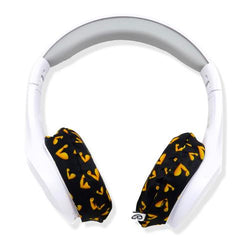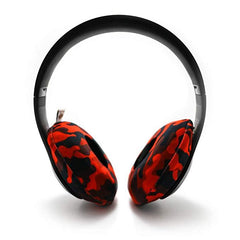Can I Exercise Outside During the Coronavirus Lockdown?

Missing your gym routine?
You’re not alone.
The UK Government ordered gyms to close as part of its response to the Coronavirus outbreak, and it’s shit.
Completely understandable, but shit.
And with no idea of when gyms and fitness centres will be back open again, many of us are now choosing to exercise outdoors.
What are the UK’s Official Coronavirus Guidelines?
The Government’s clearest and strongest message has been to stay at home.
Staying indoors helps reduce the transmission of the virus and relieves pressure on vital frontline health services.
If you need to leave your home it should only be: For basic food essentials when necessary.
- For health reasons
- For one form of exercise per day
- For work when that work cannot be done from home.
The Government has included exercise in its guidelines because staying fit and well is vital during this outbreak.
Physical exercise not only boosts a person’s immune system but it can also help relieve the symptoms of mild anxiety and depression.
Researchers in China found that people with underlying conditions who didn’t regularly exercise were “5 times more likely to have a worse outcome from COVID-19”.
And it’s not just the physical benefits to outdoor exercise. Research suggests that by spending time in nature, we can boost both our immunity and our feelings of wellbeing.
With the gyms, pubs and cafes off limits, and our family and friendship circles much diminished, we must take our opportunity to get outside and experience nature.
What Does One Form of Exercise Per Day Mean?
On the surface, it’s pretty self-explanatory:
Once in 24 hours, you can leave your house to exercise. Running, walking or cycling are three suggestions as to what you can do.
There’s been some confusion about what the ‘one exercise’ rule includes.
We know it doesn’t include golf or tennis as the clubs have been closed. Outdoor gyms are now closed, too, as are swimming pools. Team sports aren’t allowed, either, unless, you’re all living in the same household. Going to the park for Tai Chi would be fine so long as you did it alone (or in your household group) and as long as you stay 2 meters away from other people.
The way you’d usually exercise might not be available during the lockdown.

Your one form of exercise has to be local. You shouldn’t have to drive to get there.
Cabinet Minister Michael Gove believes that up to an hour walking each day or thirty minutes running (and somewhere between for cyclists) will be enough for most people, but use your common sense.
If you’re being ridiculous, then you may be stopped by the police and fined.
Coronavirus restrictions for exercise are there to protect everyone, so do your part and follow the guidelines. The quicker this is under control, the sooner we can get back to the gym.
How Can I Exercise Outdoors Safely During the COVID-19 Pandemic?
Stay indoors if you’re self-isolating because you’re infected or if someone you live with is displaying symptoms.
When you go outside maintain a 2-metre distance from other people.
If you’re running or cycling, then be ready to move around or away from others using the pavement, trail or road.
Avoid anywhere that’s busy with people which could include public parks and communal spaces. If it’s not possible to pass someone at the recommended safe distance, keep as clear as you can but don’t put yourself in danger.
Daniel Brian Nichols, associate professor in biological sciences at Seton Hall University, told Elemental on Medium that runners shouldn’t worry too much if on the odd occasion they can’t keep a 2-meter gap. “Most of the virus is in the heaviest droplets, which tend to fall out within about a meter (3.3 feet) from a person, so it’s very unlikely that you would be able to cough or sneeze over six feet and actually transmit the virus, especially outside,” he says.
An oncoming car or a ditch or drop off the trail will be a more pressing and immediate danger than catching COVID-19.
If you’re likely to be running or walking near other people, then wearing a face mask can help. There’s mixed opinion on how useful they are, but it could reduce your chances of infecting others if you’re asymptomatic.
(EarHugz are currently selling facemasks).
For those exercising in rural or remote areas, masks aren’t necessary.
Only exercise with the people in your household. Don’t call up your gym buddy.
Keep touching to a minimum. It’s not always possible to avoid pushing buttons (and we’d always advise using crossings in urban areas) or sitting on benches or leaning on railings but be mindful of what you’re doing with your hands (including touching your face).
Dr. Kevin Winthrop, a professor of Infectious Diseases in Epidemiology and Public Health at Oregon Health & Science University in Portland says that ‘environmental factors like wind and UV make it less likely you're going to come in contact with viral particles."
Avoid drinking fountains, too.
Take hygiene precautions once you’re back inside: get out of your clothes, wash your hands and take a shower. Wash your kit regularly, too.
Don’t push yourself too hard as getting an injury now would not only be frustrating but would also mean using the NHS when it’s at its most vulnerable.
There’s no limit on the time you can spend in your garden. If you’re fortunate to have outside space, use it.
What Can I Do if I Can’t Exercise Outdoors?
Staying fit indoors has never been easier. Gyms and fitness centres around the world are now moving their workouts online and many are completely free. YouTube has everything from yoga to dancing to strength training. Exercising at home during Coronavirus is the ideal opportunity to pick something that engages or interests you. You could try something new, something unusual.
There’s a lot you can do with exercise equipment, too. EarHugz has just launched two new home exercise kits: The Survival bundle and the Booty kit both offer intense workouts you can do at home.
You can also create some pretty tough workouts by being creative with the things inside your home. Weight is weight regardless of whether it’s a dumbbell or a bag of rice.
If you’re struggling to exercise because of mobility issues or chronic illness, then there are workouts you can do from a sitting position. The NHS has loads of examples of gym-free workouts suitable for anyone who can’t get outside.
Outdoor exercising should be a vital component of your COVID-19 lockdown. Take care when working out and be mindful of others you encounter along the way.
Who knows, you might be an outdoor exercise convert when this is all over.



